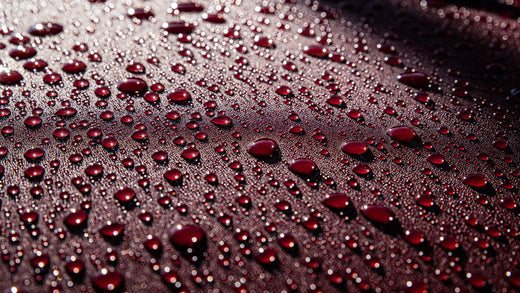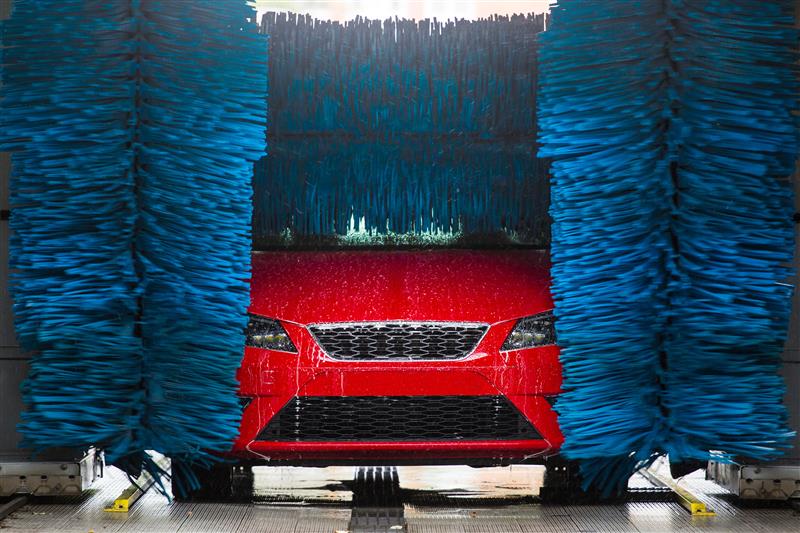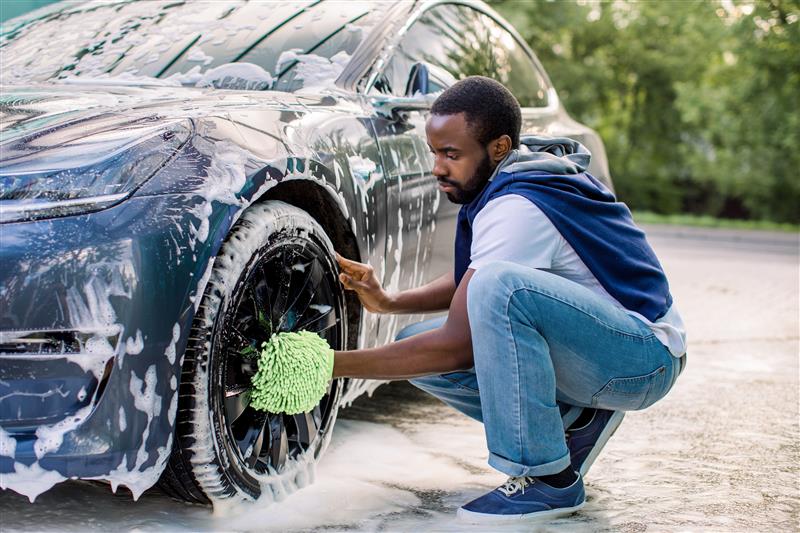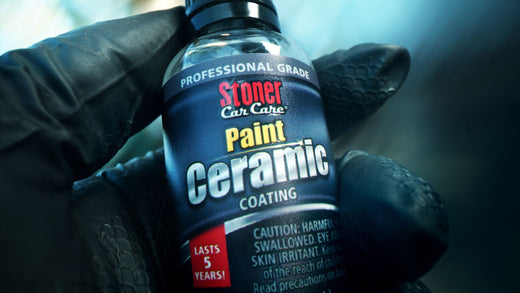Clear vision ahead with our holiday markdowns on Invisible Glass Ceramic Silicone Wiper Blades. Prices as marked.
Ceramic products have taken the car detailing world by storm, offering long-lasting protection against water, dirt, and pollutants. Do ceramic products live up to the hype? In this post, we’ll touch on all things ceramics to learn how they work and why they’ve become a favorite. We’ll also explore their benefits and drawbacks.
The science behind ceramics
All ceramic coatings use one of Earth’s most common elements, silicon dioxide (SiO2), as their base. SiO2 is the same substance found in quartz crystals - whitish rocks you may encounter in your backyard.
Ceramic coatings are unique because they chemically bond to your car’s finish on a molecular level. While waxes and sealants sit on top of your paint, ceramics become part of your exterior. This means ceramics significantly outperform polymer resin-derived products such as sealants or artificial waxes. In fact, when professionally applied, ceramic coatings will last up to a few years.
How ceramics protect your car
After a few minutes of curing, ceramic products form a crystal-clear shell to repel water, causing it to bead and roll off. After application, dirt and road grime cannot bond to the paint, making routine washing a breeze!
Why ceramics are a detailing favorite
Overall, detailers prefer ceramic coatings over sealants or artificial waxes due to ceramics’ extreme resistance to heat, abrasion, chemicals, water, and impact. On the daily, your vehicle’s exterior encounters harsh elements and faces drastic changes in weather and temperature. Long-lasting ceramic coatings can shield virtually any surface, providing protection wherever needed.
Benefits
Ceramic coatings offer several protective and cosmetic benefits, including:
Protection against UV rays
The sun can cause severe damage to your exterior paint and trim. This is because regular UV exposure may cause auto paint to fade. Ceramic coatings shield the paint from ultraviolet rays, protecting your car from fading and cracking.
Protection from chemical damage
Pollution doesn’t just wreak havoc on the environment; given the opportunity, it’ll do the same to your vehicle. Acid rain and airborne pollutants contain acidic properties that can wear down and mar your clear coat. You'll undoubtedly want to consider ceramic products if you live in or around a significantly polluted area.
In addition, acidic pollutants in bug splatter and bird droppings can damage your vehicle’s unprotected finish. The chemicals in the ceramic coatings prevent acidic pollutants from bonding with your paint. With ceramic protection, your automobile becomes resistant to acidic etching and staining.
Glaze-like finish
Protection aside, car owners love products that enhance their paint jobs – another benefit ceramics provide. Ceramic coatings enhance auto paint's reflective effects, adding clarity and depth to its color.
Long-lasting protection
Nowadays, you will find all kinds of ceramic detailers and protectants that vary by price, lifespan, and convenience. Generally speaking, one ceramic application can offer protection lasting from a few months to five years. The initial application can be time-consuming, but you shouldn’t need to reapply often.
Maintain the value of your vehicle
Most people eventually look to sell their car as a trade-in, and dealers look at a car’s finish when determining a cash value. Ceramic products help keep your exterior finish in good shape, maintain your vehicle’s value, and earn you cash back on a trade.
Drawbacks
Just as ceramics offer various benefits, they have drawbacks worth considering. Here are a few:
Water spot potential
While ceramic products help bead and repel water, they won’t completely prevent water spots. Newly-formed water spots won’t do much harm outside of appearance. Over time, however, these spots can eat through the ceramic coating and clear coat, eventually embedding themselves into your exterior. Routine car washes are still needed even when you have a ceramic coating in place.
For more information on water spots and how to prevent them, check out our blog here.
Scratches, rock chips, and swirl marks
Ceramic products offer protection against light scratching and contaminants you may encounter during everyday driving. Still, it’s essential to realize that your vehicle is equipped with a limited defense. Ceramics won’t fully protect your vehicle from harsher hazards like rock chips, parking lot scratches, or swirl marks resulting from improper car washes.
Expense
Ceramic car products are more convenient than ever, but protection comes at a cost. You may find that ceramic protectants are more expensive than traditional wax or sealants – especially if you opt for a professional application.
Hard to remove
To be fair, difficult removal is both a drawback and a benefit. Once a ceramic product is applied, it is on your paint, and you won’t get it off with a standard wash or microfiber towel. There are specialized products available that can safely remove ceramic products. The bad news is that you’ll have to go out of your way to buy them, and they will undoubtedly require elbow grease.
Do ceramics truly work?
A ceramic car coating is like an extra layer of skin on your car’s surface. Ceramics’ microscopic particles adhere to your vehicle, forming a tough, transparent layer that is invisible to the naked eye.
Even though you can’t see it, this layer closes the pores of your car’s paint. After application, your vehicle’s surface is sealed from moisture, making it more resistant to UV rays, scratches, chemicals, and everyday contaminants. A properly applied ceramic coat forms a semi-permanent bond with the surface of your vehicle, meaning that it will not break down or wash away quickly.
In short, ceramics provide a robust, more durable alternative to traditional waxes and sealants, and they will work to provide reliable protection for day-to-day commutes. Whether you opt for a professionally applied coating or apply it yourself, ceramics can protect your car for years – and miles – down the road.




